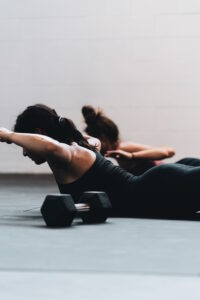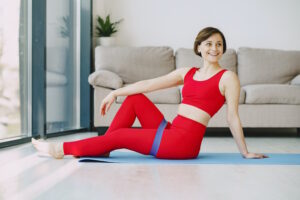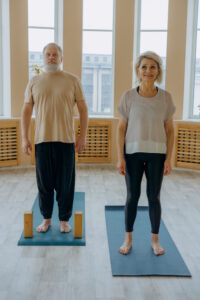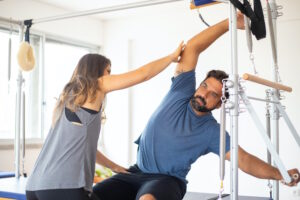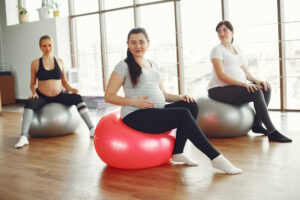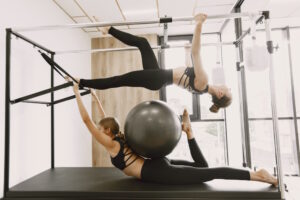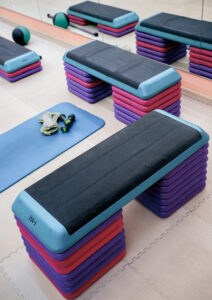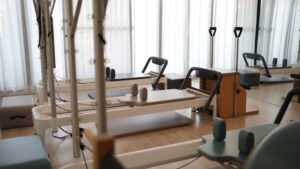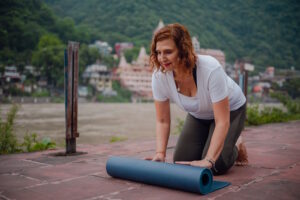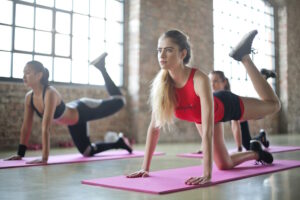
Group fitness classes are a popular way to engage in structured exercise while enjoying the camaraderie and motivation of a group setting. Pilates, with its emphasis on core strength, flexibility, and mind-body connection, is a valuable addition to group fitness programs. By incorporating Pilates equipment into these classes, participants can experience an enhanced workout that targets various muscle groups and provides added resistance and support. In this article, we will explore the benefits of incorporating Pilates equipment into group fitness classes, discuss ways to integrate Pilates into a workout, examine the equipment commonly used in club Pilates, and identify exercises and activities that can complement Pilates in group fitness settings.
What component of fitness does Pilates incorporate? Pilates incorporates several components of fitness, including core strength, flexibility, muscular endurance, and body awareness. The focus on core strength helps improve stability, posture, and overall functional movement. Pilates exercises also promote flexibility and mobility, enhancing joint range of motion and reducing the risk of injury. By utilizing controlled movements and proper alignment, Pilates develops muscular endurance and promotes muscle tone and definition. Furthermore, the mind-body connection fostered through Pilates enhances body awareness, concentration, and stress management.
How do I incorporate Pilates into my workout? To incorporate Pilates into a workout, consider adding dedicated Pilates sessions or integrating Pilates-inspired exercises into existing group fitness classes. For dedicated Pilates sessions, allocate specific time for participants to engage in a Pilates equipment workout. This allows for focused attention on Pilates principles and exercises. Alternatively, Pilates-inspired exercises can be integrated into classes such as circuit training, HIIT, or boot camps. These exercises can target core strength, flexibility, and stability, complementing other components of the class and providing a well-rounded workout experience.
What equipment is used in club Pilates? Club Pilates often incorporates a variety of equipment to enhance the workout experience. Some common equipment used in club Pilates includes the reformer, Cadillac (trapeze table), stability chair, and various props such as resistance bands, small balls, and foam rollers. The reformer, with its adjustable springs and sliding carriage, provides resistance and support for a wide range of exercises. The Cadillac offers versatility for exercises that focus on strength, flexibility, and mobility. The stability chair provides a platform for seated and standing exercises targeting the lower body, core, and upper body. Props such as resistance bands, balls, and foam rollers can be incorporated to add variety and challenge to the workouts.
What can I combine with Pilates? Pilates can be effectively combined with other exercises and activities to create a well-rounded group fitness class. Cardiovascular exercises, such as cycling, dancing, or step aerobics, can be integrated with Pilates to provide a balanced workout that combines cardiorespiratory fitness and core strength. Strength training exercises using weights, resistance bands, or bodyweight movements can also be included to target specific muscle groups. Yoga and Pilates fusion classes can combine the mindfulness and flexibility of yoga with the core strength and stability of Pilates. By combining Pilates with other exercises, participants can enjoy a diverse and engaging workout experience.
In summary, incorporating Pilates equipment into group fitness classes offers numerous benefits for participants. Pilates incorporates core strength, flexibility, muscular endurance, and body awareness into the workout. To incorporate Pilates into a workout, dedicated Pilates sessions can be added or Pilates-inspired exercises can be integrated into existing classes. Club Pilates often utilizes equipment such as the reformer, Cadillac, stability chair, and props to enhance the workout experience. Pilates can also be combined with other exercises and activities, including cardiovascular exercises, strength training, and yoga, to create dynamic and well-rounded group fitness classes. By incorporating Pilates equipment and principles, participants can enjoy a diverse and effective workout that targets multiple components of fitness and promotes overall well-being.
